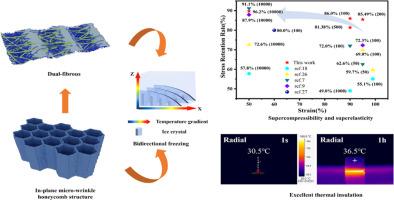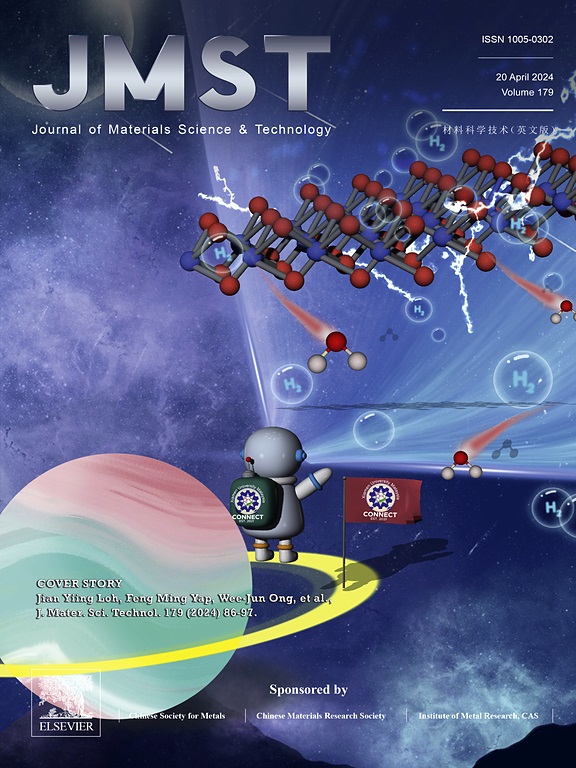A lightweight, supercompressible and superelastic aramid nanofiber/nanocellulose-derived carbon aerogel with in-plane micro-wrinkle honeycomb structure for thermal insulation
IF 11.2
1区 材料科学
Q1 MATERIALS SCIENCE, MULTIDISCIPLINARY
引用次数: 0
Abstract
Nanofiber carbon aerogels with 3D interconnected microfibrillar networks exhibit fascinating physical properties and present great application potential. However, it is still a challenge to fabricate superelastic nanofiber carbon aerogels owing to their extremely dilute brittle interconnections and poor fiber toughness after carbonization. Herein, aramid nanofibers (ANF)/nanocellulose (CNF) dual-fibrous carbon aerogels are prepared, which exhibited supercompressibility and superelasticity due to the "skeleton-binder" synergistic effect of ANF and CNF and the design of in-plane micro-wrinkle honeycomb structure. The "skeleton-binder" synergistic effect improves interfacial interactions of nanofibers and optimizes the stress distribution of carbon aerogel. The highly ordered honeycomb structure with in-plane microwrinkles, formed by the bidirectional freezing and the difference in volume shrinkage during the carbonization between CNFs and ANFs, endows the CNF/ANF carbon aerogel with negative Poisson's ratio and high energy absorption capacity. These strategies significantly improve the overall mechanical properties of ANF/CNF carbon aerogel including the elasticity and fatigue resistance. As a result, the ultralight carbon aerogel (3.46 mg/cm3) exhibits excellent supercompression (undergoing an extreme strain of 95%) and elasticity (a stress retention up to 81.38% at 90% strain with 500 cycles and 96.15% at 50% strain with 10000 cycles). The nanofiber carbon aerogel shows excellent multifunctional properties in flexible piezoresistive sensor and anisotropic thermal insulation materials, including a desirable sensitivity (as high as 48.74 kPa−1) and an instant response time (∼40 ms), an anisotropy factor of 3.69 and an ultralow radial thermal conductivity (0.012 W m−1 K−1). These properties make dual-fibrous carbon aerogels highly attractive in pressure sensors and thermal management applications.

求助全文
约1分钟内获得全文
求助全文
来源期刊

Journal of Materials Science & Technology
工程技术-材料科学:综合
CiteScore
20.00
自引率
11.00%
发文量
995
审稿时长
13 days
期刊介绍:
Journal of Materials Science & Technology strives to promote global collaboration in the field of materials science and technology. It primarily publishes original research papers, invited review articles, letters, research notes, and summaries of scientific achievements. The journal covers a wide range of materials science and technology topics, including metallic materials, inorganic nonmetallic materials, and composite materials.
 求助内容:
求助内容: 应助结果提醒方式:
应助结果提醒方式:


